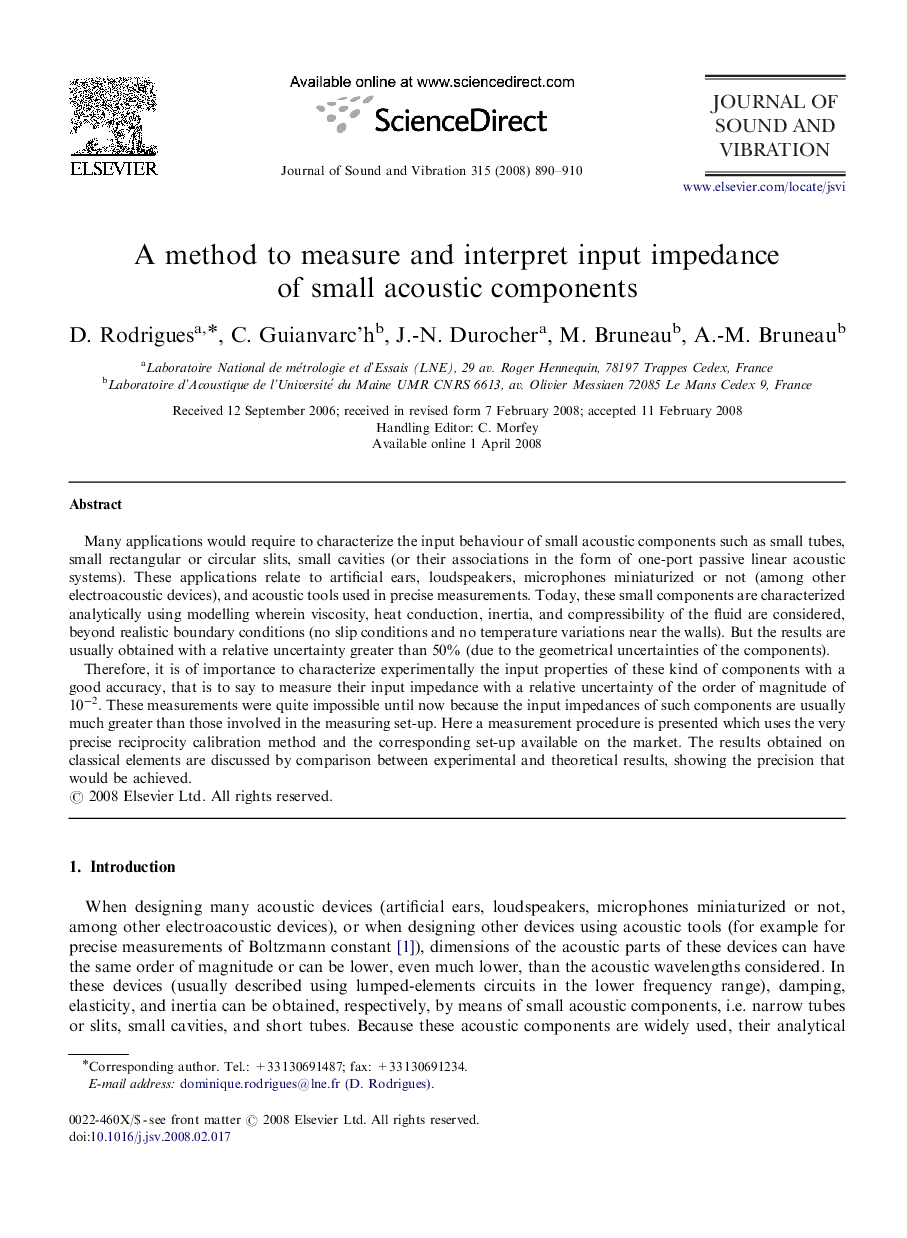| Article ID | Journal | Published Year | Pages | File Type |
|---|---|---|---|---|
| 290239 | Journal of Sound and Vibration | 2008 | 21 Pages |
Many applications would require to characterize the input behaviour of small acoustic components such as small tubes, small rectangular or circular slits, small cavities (or their associations in the form of one-port passive linear acoustic systems). These applications relate to artificial ears, loudspeakers, microphones miniaturized or not (among other electroacoustic devices), and acoustic tools used in precise measurements. Today, these small components are characterized analytically using modelling wherein viscosity, heat conduction, inertia, and compressibility of the fluid are considered, beyond realistic boundary conditions (no slip conditions and no temperature variations near the walls). But the results are usually obtained with a relative uncertainty greater than 50% (due to the geometrical uncertainties of the components).Therefore, it is of importance to characterize experimentally the input properties of these kind of components with a good accuracy, that is to say to measure their input impedance with a relative uncertainty of the order of magnitude of 10-210-2. These measurements were quite impossible until now because the input impedances of such components are usually much greater than those involved in the measuring set-up. Here a measurement procedure is presented which uses the very precise reciprocity calibration method and the corresponding set-up available on the market. The results obtained on classical elements are discussed by comparison between experimental and theoretical results, showing the precision that would be achieved.
